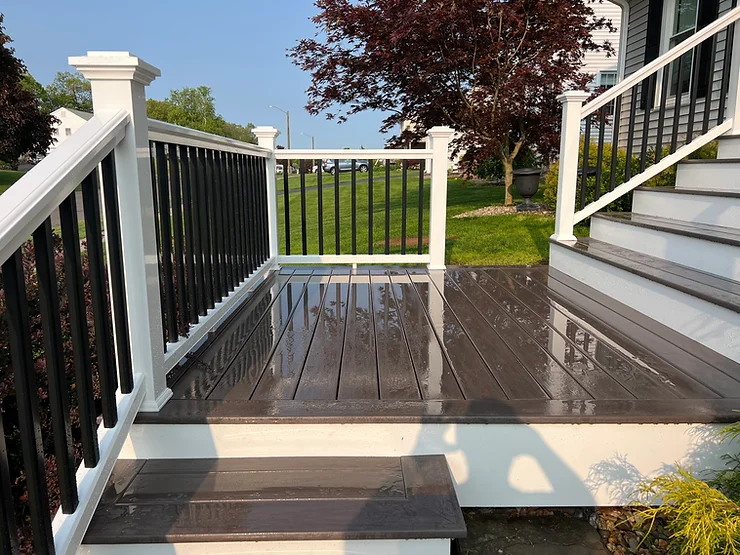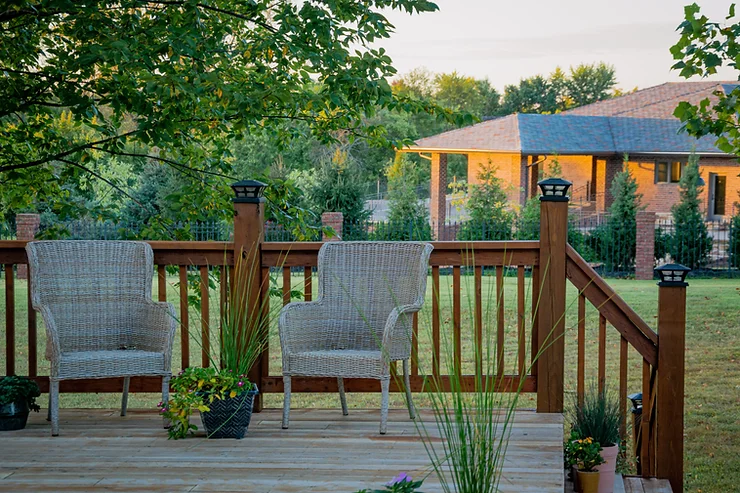When it comes to building a deck for your home, choosing the right material is crucial. Pressure treated and composite decks are two popular options, each with its own set of advantages and disadvantages.

Pressure Treated Decks:
Pressure treated wood is a common choice for deck construction, primarily because of its affordability and durability. Here are the benefits and disadvantages of pressure treated decks:
Benefits:
1. Cost-effective: Pressure treated wood is generally more affordable compared to composite materials, making it an attractive option for homeowners on a budget.
2. Natural look: Pressure treated wood offers a classic, natural aesthetic that blends well with outdoor surroundings. It can be stained or painted to achieve a desired look and can easily be customized to match your home’s exterior.
3. Strength and durability: Properly treated wood is resistant to rot, decay, and insect damage. It can withstand heavy foot traffic and regular exposure to the elements, making it a durable choice for outdoor structures.
Disadvantages:
1. Maintenance requirements: Pressure treated decks require regular maintenance, including periodic staining or sealing to protect against weathering, splitting, and warping. Regular inspections are necessary to detect and address any signs of damage promptly.
2. Susceptible to moisture: While pressure treated wood is resistant to decay, it can still absorb moisture, leading to potential swelling, cracking, and splintering. Proper ventilation and periodic sealing are necessary to mitigate moisture-related issues.

Composite Decks:
Composite decking is a popular alternative to traditional wood decks, composed of a combination of recycled materials, such as wood fibers and plastic. Here are the benefits and disadvantages of composite decks:
Benefits:
1. Low maintenance: Composite decking requires minimal upkeep, eliminating the need for staining, sealing, or regular maintenance. It is resistant to fading, staining, and mold growth, making it an attractive option for homeowners seeking a low-maintenance solution.
2. Longevity: Composite decking is designed to be highly durable and resistant to rot, splintering, and insect damage. It can withstand harsh weather conditions, including UV rays, without significant degradation.
3. Variety of colors and textures: Composite decking offers a wide range of colors, finishes, and textures, allowing homeowners to achieve the desired aesthetic without sacrificing durability or performance.
Disadvantages:
1. Higher upfront cost: Composite decking tends to be more expensive than pressure treated wood, requiring a higher initial investment. However, the long-term savings in maintenance costs may offset the initial expense.
2. Heat retention: Composite decks may retain more heat compared to natural wood, especially in direct sunlight. This can make the surface uncomfortably hot during warm weather. However, selecting lighter colors or using shading solutions can help mitigate this issue.
3. Potential for fading: While modern composite decking is designed to resist fading, some lower-quality products or certain color options may experience some degree of fading or color change over time.
Choosing between pressure treated and composite decks depends on various factors, including budget, desired aesthetics, maintenance preferences, and long-term durability. Pressure treated decks offer affordability and a natural look but require regular maintenance and are susceptible to moisture-related issues. On the other hand, composite decks provide low maintenance, longevity, and a variety of design options. Still can’t decide on Pressure Treated vs. Composite Decks? Call the trusted name in deck installations, Nor’East Exteriors. Our team is happy to answer questions or provide a free, no-obligation estimate for Connecticut projects.
